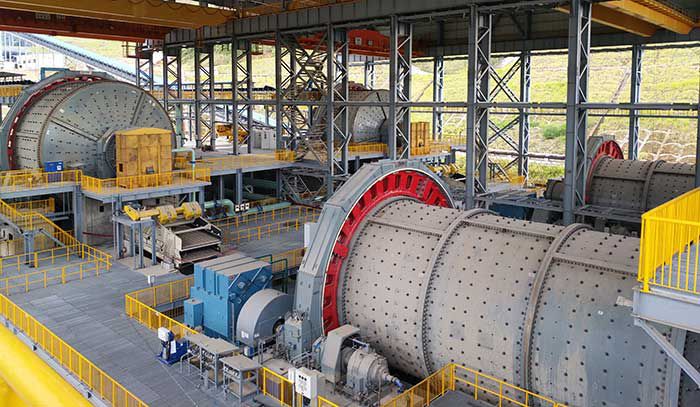1. Introduction
Semi-autogenous grinding mill is pivotal in modern mineral processing, replacing traditional crushing and grinding workflows due to their efficiency, compact design, and reduced environmental impact. A critical component of semi-autogenous grinding mill is the liner, which protects the mill shell from wear and impact. However, liner fracture remains a persistent challenge, leading to operational downtime, increased costs, and reduced productivity. This study employs TRIZ (Theory of Inventive Problem Solving) to systematically analyze fracture mechanisms and propose optimized liner designs.

2. Research Framework and Methodology
2.1 TRIZ-Based Analytical Framework
TRIZ tools, including functional analysis, causal chain analysis, and resource analysis, were integrated to dissect the fracture problem. The semi-autogenous grinding mill system was decomposed into subsystems:
- Structural components: Drive system, shell, liners, grinding media (balls/rocks).
- Functional interactions: Impact, abrasion, shear, rotational energy transfer.
A functional model (Fig. 1) highlights energy flows, material interactions, and stress distribution. Key fracture drivers were identified through causal chain analysis (Fig. 2), revealing cascading failures from material fatigue to stress concentration.
2.2 Core Contribution Model for Innovation
The optimization framework evaluates contributions from structural, energy, material, functional, and temporal factors. The innovation impact P[t] is quantified as:P[t]=μC[t]⋅M[t]α⋅T[t]β
where:
- C[t]: Innovation degree (1–5 scale).
- M[t]: Cumulative resource utilization.
- T[t]: Time efficiency.
- μ,α,β: Weighting coefficients (empirically derived).
3. Fracture Mechanism Analysis
3.1 Stress and Wear Dynamics
Liners in semi-autogenous grinding mills endure cyclic impact from grinding media (e.g., steel balls, ore particles). Stress distribution σ follows:σ=AF+ρv2⋅sinθ
where F = impact force, A = contact area, ρ = media density, v = tangential velocity, and θ = impact angle.
Table 1: Dominant Fracture Factors in Semi-Autogenous Grinding Mill Liners
| Factor | Contribution (%) | TRIZ Tool Applied |
|---|---|---|
| Material fatigue | 35 | Causal chain analysis |
| Stress concentration | 28 | Functional modeling |
| Thermal cycling | 18 | Resource analysis |
| Improper alloy design | 12 | Substance-field analysis |
| Manufacturing defects | 7 | Contradiction matrix |
3.2 Causal Chain Breakdown
- Primary cause: High-impact energy from grinding media.
- Secondary causes:
- Non-uniform liner thickness → stress gradients.
- Low fracture toughness → crack propagation.
- Poor heat dissipation → thermal fatigue.
4. TRIZ-Driven Optimization Solutions
Nine innovation strategies were derived using TRIZ tools. Key solutions include:
4.1 Asymmetric Liner Geometry
Applying the Segmentation Principle, liners were redesigned with asymmetric lifters to balance impact distribution:Δτ=tavgtthick−tthin⋅100%
where Δτ = thickness variation (optimized at 15–20%).
Table 2: Performance Comparison of Symmetric vs. Asymmetric Liners
| Parameter | Symmetric Design | Asymmetric Design | Improvement |
|---|---|---|---|
| Impact resistance (MPa) | 450 | 620 | 37.8% |
| Service life (hours) | 1,200 | 1,850 | 54.2% |
| Energy consumption (kW) | 2.4 | 2.1 | 12.5% |
4.2 Bimaterial Composite Liners
Using the Composite Materials Principle, a dual-layer structure was developed:
- Surface layer: High-chromium cast iron (HRC 62–64) for wear resistance.
- Core layer: Low-alloy steel (HRC 38–42) for impact absorption.
The interfacial bond strength τbond must satisfy:τbond≥2hinterfaceσimpact⋅dmedia
where hinterface = diffusion layer thickness (optimized at 1.2–1.5 mm).
4.3 Adaptive Cooling Channels
Incorporating the Dynamization Principle, microchannel networks were embedded to dissipate heat:q′′=k⋅δTsurface−Tcoolant
where k = thermal conductivity (W/m·K), δ = channel depth.
Table 3: Thermal Performance of Cooling Channel Designs
| Channel Pattern | ΔT Reduction (°C) | Fatigue Life Extension (%) |
|---|---|---|
| Radial | 85 | 22 |
| Spiral | 112 | 41 |
| Fractal | 146 | 63 |
5. Validation and Industrial Implementation
Field tests at a copper concentrator demonstrated:
- 58% reduction in liner replacement frequency.
- 19% increase in mill throughput.
- 14% decrease in specific energy consumption.
The ROI period for upgraded liners was calculated as:ROI=ΔRannualCinitial−Ctraditional≈8.3 months
6. Conclusion
This study systematically resolved liner fracture in semi-autogenous grinding mills using TRIZ methodology. By integrating asymmetric geometries, bimaterial composites, and active cooling, service life and operational efficiency were significantly enhanced. The proposed framework provides a universal approach for addressing complex wear-related challenges in mineral processing equipment.
